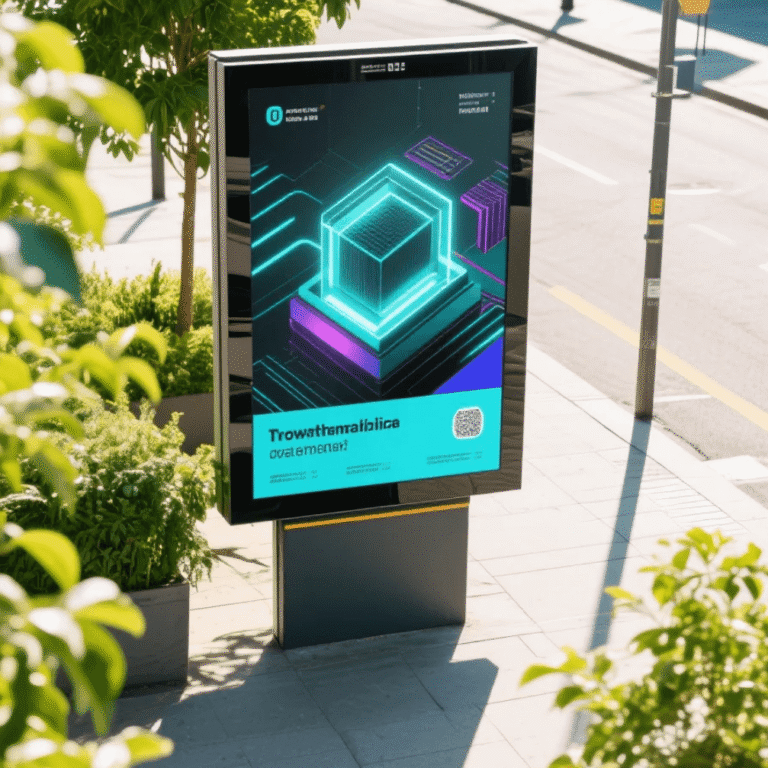Outdoor Digital Signage: Is It Worth the Investment for Your Business?
Introduction: Why Outdoor Digital Signage is a Critical Consideration
In an increasingly competitive landscape, capturing the fleeting attention of consumers is the ultimate challenge. While traditional print advertisements and posters fade into the background, a dynamic, vibrant solution has proven its undeniable power: outdoor digital signage. This technology has moved far beyond simple screens, evolving into sophisticated, weather-resistant communication tools that are essential for any business aiming for high visibility and engaging customer interaction. This article serves as a comprehensive guide for digital signage product users, diving deep into the features, practical applications, and compelling value proposition of incorporating this robust technology into your marketing and operational strategy. We will explore why investing in high-quality outdoor displays is not merely an expense, but a strategic decision that drives significant returns.
Defining the Value Proposition of Outdoor Digital Signage

At its core, outdoor digital signage refers to purpose-built electronic displays designed to operate reliably in exterior environments. Unlike indoor screens, these units are engineered to withstand the harshest elements—from torrential rain and extreme heat to direct sunlight and vandalism. This fundamental difference is what unlocks their unique commercial value.
Overcoming the Environmental Challenge
A key element of their design is ruggedization. To ensure longevity and reliable performance, these displays typically feature high-brightness screens, often exceeding 2,500 nits, which is crucial for cutting through harsh daylight and direct sun glare. Furthermore, the enclosures are often IP-rated (Ingress Protection) to guard against dust and moisture, and they incorporate advanced climate control systems. These sophisticated systems manage internal temperature fluctuations, preventing overheating in summer and ensuring startup in freezing conditions. Therefore, investing in signage that can handle such environmental stresses provides peace of mind and minimizes costly downtime.
Unmatched Visibility and Engagement
The simple truth is that movement and light naturally draw the human eye. Compared to static signs, outdoor digital signage delivers a dynamic canvas that can display video, scrolling text, real-time updates, and interactive content. This allows for a far more compelling and immediate connection with passersby, dramatically boosting recall rates and message penetration. Businesses that utilize this visibility are effectively turning their exterior walls, drive-thrus, and pedestrian areas into powerful, 24/7 promotional platforms.
Strategic Applications Across Various Industries

The versatility of outdoor digital signage means it can be deployed to solve a wide range of communication challenges across numerous sectors. Its ability to update content instantly and remotely is a massive operational advantage.
Retail and Quick-Service Restaurants (QSR)
For retailers, outdoor screens placed in storefront windows or on sidewalks can showcase current promotions, limited-time offers, and high-impact brand messaging, compelling shoppers to step inside. In the QSR industry, outdoor digital menu boards have become the gold standard. They allow managers to instantly adjust pricing, highlight daily specials based on inventory or time of day, and reduce perceived wait times by providing engaging visuals at the drive-thru. This dynamic capability leads directly to increased average order values and operational efficiency.
Transportation and Public Information
At bus stops, train stations, and airports, robust outdoor displays are essential for providing timely, critical information. They display real-time schedules, unexpected delays, and important safety announcements. In these high-traffic public spaces, the durability and high brightness of the signage ensure the information remains accessible and reliable, regardless of the weather or time of day. This application highlights the signage’s role not just in marketing, but in essential public service.
Entertainment and Venues
Large-format outdoor screens are indispensable for sports stadiums, concert venues, and theaters. They provide wayfinding information, advertise upcoming events, and display live scores or social media feeds, significantly enhancing the overall visitor experience. By creating an immersive and dynamic environment, venues can build anticipation and foster a stronger connection with their audience before they even step through the doors.
Key Features Driving Investment Value

When considering the right outdoor digital signage product, users should focus on several core technical features that directly translate into long-term value and effectiveness.
The Importance of High Brightness and Contrast
As previously mentioned, an adequate nits rating is non-negotiable for outdoor viewing. A display with insufficient brightness will simply wash out in direct sunlight, rendering the investment useless during peak daytime hours. Complementing high brightness, a good contrast ratio ensures that colors remain vivid and text is sharp, which is essential for maintaining readability from a distance. Therefore, choosing a high-specification screen guarantees maximum visibility and impact around the clock.
Content Management System (CMS) Flexibility
The true power of digital signage lies in its ability to be updated quickly and easily. A robust, user-friendly Content Management System (CMS) is crucial. This system should allow for remote content scheduling, multi-screen synchronization, and the ability to integrate live data feeds (like weather or news). A powerful CMS maximizes the return on investment by allowing businesses to rapidly respond to market changes, adjust campaigns on the fly, and ensure that the right message is delivered at the exact right moment.
Security and Maintenance Accessibility
Given their exposed nature, physical security features, such as toughened glass and secure locking mechanisms, are a must. Furthermore, ease of maintenance should not be overlooked. Designs that allow for relatively simple component access and repair minimize disruption and reduce the total cost of ownership over the display’s lifetime. Therefore, selecting a well-designed unit ensures both asset protection and reduced operational hassle.
Conclusion: Securing a Future-Proof Communication Strategy
In summary, the question is not if outdoor digital signage is worth the investment, but rather how quickly your business can deploy it to gain a competitive advantage. This technology represents a significant evolution in communication, offering a blend of unmatched visibility, dynamic content delivery, and environmental resilience that static media simply cannot match. For digital signage product users, focusing on ruggedized design, high-brightness screens, and a flexible CMS will ensure a successful, high-impact deployment. By strategically integrating this powerful tool, businesses are positioning themselves at the forefront of customer engagement, securing a modern, future-proof communication strategy that consistently delivers tangible results and a strong return on investment.
Frequently Asked Questions (FAQ)
Q1: How does the lifespan of outdoor digital signage compare to indoor displays?
A: Outdoor digital signage is built with industrial-grade components and advanced thermal management systems, designed for continuous operation in harsh conditions. While generally having a higher initial cost, their engineered durability often results in a comparable or longer reliable lifespan than standard indoor commercial screens, provided regular maintenance is performed.
Q2: What kind of internet connectivity is required for remote content updates?
A: Reliable internet connectivity, either wired (Ethernet) or wireless (Wi-Fi/4G/5G cellular), is essential. For mission-critical applications where uninterrupted service is required, a hardwired Ethernet connection is often preferred, though a cellular modem can provide excellent flexibility for locations without easy wired access.
Q3: Is special software needed to create content for outdoor digital signage?
A: While standard design software can create the raw assets (images, video), you will primarily need a dedicated Content Management System (CMS) platform. This platform manages the scheduling, distribution, and playback of your content across all your screens, ensuring your messaging is consistent and delivered as planned.




